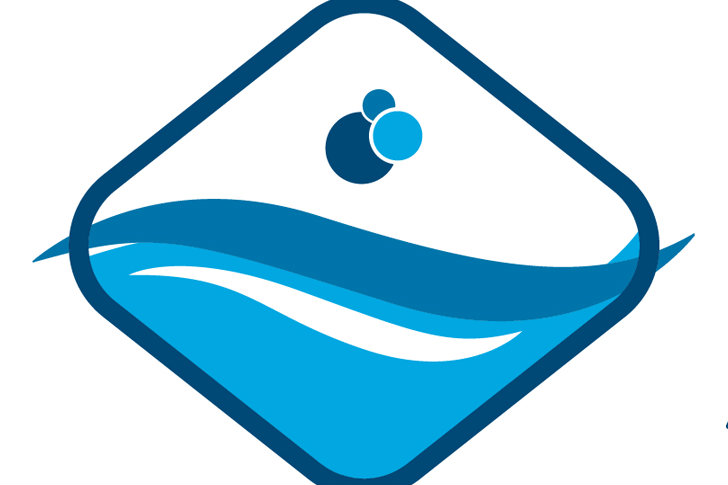Don’t let the term “soft skills” fool you.
Meaning those personal characteristics that help someone interact with others effectively and harmoniously, soft skills may not earn a specific mention in your core job description, especially for technicians. But they can provide the key ingredient for a company’s success.
It basically boils down to communication. And it’s an important enough topic to Dan Lenz that he covers it extensively with his staff, especially during his company’s winter training period. During that time, the team dedicates every Thursday solely to training. And each training day, Lenz addresses at least one communication topic. It often involves role playing.
The subject has become so top-of-mind that Hayward has slated designer/builder Scott Cohen to present on the subject at its Partner Summit in March.
With the ultimate goal being to make the customer comfortable and foster trust, he and other experts offer tips to develop your soft skills:
“Drop your baggage, and prepare to meet a new friend.”
When training his sales team, Cohen says to leave the day at the door.
“We are all in our day-to-day life — we’re racing around, getting cut off the freeway,” says the president of The Green Scene Landscaping & Swimming Pools in Chatsworth, Calif. “Maybe your boss said if you don’t sell a pool you’ll get fired, and your spouse reminded you of 10 things you forgot to do. So you may show up at the house frazzled, but that’s no way to start a meeting.”
Before entering a conversation, take a deep breath and leave those thoughts behind. Focus on the meeting in front of you, and building a relationship.
“I tell my salespeople, ‘I don’t want you to worry about selling a pool or a landscape — I want you to focus on making a friend,’” he says. “‘Don’t pressure them, don’t offer them deals or discounts, just make a friend.’ That’s the goal.”
Avoid negative language.
This doesn’t simply mean to resist the urge to complain or criticize. Instead, Lenz advises his staff to steer clear of negative words altogether. That means erasing “don’t” and “won’t” from their vocabulary as much as possible.
“If somebody says, ‘I want you to paint my deck with candy canes,’ we don’t say, ‘We don’t do that,’ or, ‘We won’t do that,’” Lenz explains. “We try to talk about what we will do instead.”
Outline feasible options and the reasoning behind them, he encourages.
An alternate example would come during pool openings. A client may tell the tech to vacuum their pool on the same day that they remove the cover, start-up the equipment and begin balancing the water.
“If we just answer, ‘We don’t do that,’ it’s almost like inciting a confrontation,” Lenz says. “Instead, we explain what we do: ‘Oh, you want it to be vacuumed? Here’s the process we go through …’ We should be saying what we will do and why.”
This applies regardless of the mode of communication, whether it be in-person, voicemail, email or text.
Key phrase: “It’s my pleasure.”
It may seem odd, but a pet peeve of Cohen’s is when a customer thanks a professional for their work, and the pro says, “You’re welcome.”
For him, there’s only one response: “My pleasure.”
“It sounds so much better,” he says. “It feels better. Even if the [professional] says thank you, that’s not the same. ‘My pleasure’ says it’s an honor to serve you. When we’re working with somebody, it’s an honor to serve them so they should feel that way.”
When texting, be judicious about shortcuts.
We’ve known since the dawn of emails the challenge of communicating without the benefit of hearing one’s tone of voice or seeing their body language. Then texts made brevity crucial.
Despite this, Lenz doesn’t want his staff to use abbreviations. Some can come across as flippant, he believes, especially to those generations who weren’t raised on the shorthand.
“A personal pet peeve of mine is the use of ‘kk’ instead of ‘OK,’” he says. “I understand that it’s texting, but it’s from a business environment, so we’re not going to use the abbreviations. I don’t want to see a ‘ttyl’ for ‘talk to you later.’ I want to see them use their words.”
However, he does encourage them to use emoji to help convey tone.
“Texts can be very cold and unfeeling, and by adding a happy face or thumbs up, to me it helps identify the tone in which you intended the message to be given,” he says.
Take a lesson from the turtle.
When things get busy and the to-do list gets long, we naturally want to speak as quickly as possible so we can check the transaction off our list and move on to the next one. Then some of us just naturally speak quickly.
Whatever the cause, Lenz tells staff to slow down when speaking with clients. “Enunciate. Make sure your words are being heard, and have a conversation where the listener isn’t feeling rushed or cut short. Making sure they’re getting the information they need and understanding it is important.”
Use inviting body language.
The goal is to make clients feel comfortable and happy to do business with you.
“I like people to talk in calming tones and offer some level of comfort,” Lenz says.
For him that means being relaxed and open in tone and body language. No folding arms in front of you or placing hands in pockets.
And always make eye contact. “Not facing away from them and turning toward them — but [physically] facing them,” he says. “All these things that give comfort to people beyond the spoken word.”
Match the mode of communication to the occasion.
Texts can save a ton of time but they don’t always make sense, says Nick Day, general manager of Denton, Texas-based Gohlke Pools.
“If it’s a long back-and-forth or a large amount of information that you need to send the customer, we would ask that they try to take that to a phone call,” he says. “They can even text, ‘This requires a long answer. Could you give me a call sometime so we can answer it.’”
The same holds true if there’s a concern about tone — if the customer seems like they might not be happy or if the conversation is more difficult or sensitive.
“People over the phone might act a little differently than in text and even better in person,” Day says.
He avoids voicemail altogether: “When’s the last time you listened to your voicemail?” (Unless the customer says they prefer it, of course.)
Day places emails one step above voicemails. For him, they make most sense for sending notices, quotes, contracts and other longer documents that might need some time and focus. But he doesn’t use it for more interactive communication or exchanges that need a quicker reaction. Even when he does email, he’ll usually text or call to notify them about the email, so they can look for it.
Walking the courtesy conundrum
You’re in a client’s home, and they ask if you’d like a cup of coffee or something to drink. On the one hand, you don’t want to put them out. On the other, you don’t want to seem like you’re turning down their gracious gesture — plus, the caffeine boost may sound good.
Cohen has a rule for how he and his team respond to this situation: “If you’re having one, I will join you.”
“I’m training a new guy and the client says, ‘Would you like a cup of coffee?’ Because that’s a courteous thing to say,” he explains. “[My salesperson] says, ‘I’d love one.’ Then the client explains that she actually hates coffee, but her husband drinks it, and she has to spend 15 minutes figuring out how to make it. That’s not what you want.”
If somebody offers an alcoholic drink, Cohen says never on the job.
“Whether or not you think they will, they will judge you,” Cohen says. “A guy may offer you a beer on a Saturday at 3 o’clock in the afternoon, but they will still judge you as the guy who drank a beer and got in the car to drive. Later in the project if you’re buddies” — and you practice moderation — “that’s great, but not in the initial consultations.”
Check in often
Cohen checks on his clients regularly, whether they need it or not.
He schedules an on-site meeting with each customer every two weeks. He explains to them upfront that this is a necessary part of the process. During the visits, he might verify the client’s choice of a material or tree placement. He might suggest they consider a lighting upgrade. But the overall goal is to make sure they’re happy with how things are going.
“Be the waitress who comes to the table to see how your meal is going,” he says. “That’s how you get good reviews. You don’t wait until the end of the job.”
These meetings are a hard requirement for him, even if it pushes back meetings with potential new clients.
Start with one voice
Some communication problems spring from a lack of confidence, Lenz recognizes. And customers can become frustrated if they get conflicting information from different employees.
To help with both these problems, Lenz sets his team up to speak with “one voice.”
“Everybody is always saying the same thing — whether it’s about a technical issue, a feature, benefit or policy,” he explains.
As part of the company’s annual training, and at meetings throughout the year, the staff goes over information about the products and services they offer, as well as policies and the like to make sure everybody shares the same knowledge.
The use of text and email templates to address various questions and situations also helps here. This ensures the customer receives the right information, and that the employee is confident in providing it.
Use technology to help bridge the gap
For some individuals, communication will never come quickly or easily.
For this reason, the team at Gohlke Pools makes use of email templates that technicians can rely on to convey information clearly, thoroughly and with the right tone.
Companies that use texting platforms also can incorporate templates for this mode.
Day’s team also has begun using AI to help compose emails.
Some do this through Microsoft Copilot, others through ChatGPT.
“That’s something they’re adapting more and more into their everyday job,” he says.



